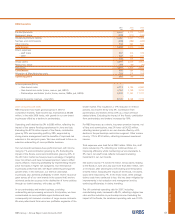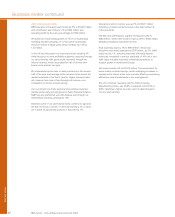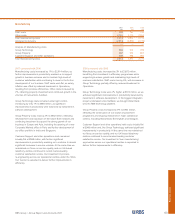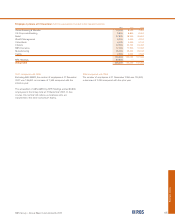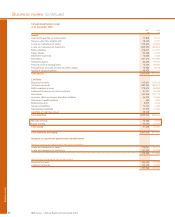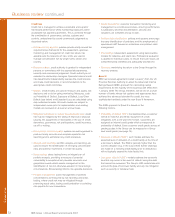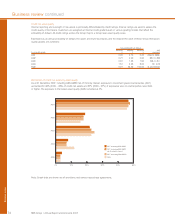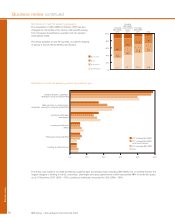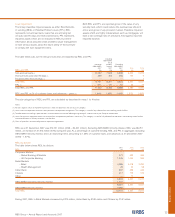RBS 2007 Annual Report Download - page 72
Download and view the complete annual report
Please find page 72 of the 2007 RBS annual report below. You can navigate through the pages in the report by either clicking on the pages listed below, or by using the keyword search tool below to find specific information within the annual report.
RBS Group • Annual Report and Accounts 2007
70
Business review continued
Business review
Group Audit Committee
Group Board of Directors
Advances Committee
Group Executive
Management Committee
Group Credit Committee
Group Asset and
Liability Management
Committee
Group Risk Committee
Board Committees
Executive Committees
Key
The Group Board of directors sets the overall risk appetite and philosophy; the risk and capital framework underpins delivery of the
Board’s strategy. The Board is supported by three committees:
Risk and capital management
Governance
•Group Audit Committee (“GAC”), comprising independent
non-executive directors, focuses on financial reporting and
application of accounting policies as part of the internal
control and risk assessment framework. GAC monitors the
identification, evaluation and management of all significant
risks throughout the Group. This work is supported by Group
Internal Audit, which provides an independent assessment
of the design, adequacy and effectiveness of internal
controls.
•Advances Committee (“AC”), reporting to the Board, deals
with transactions that exceed the Group Credit Committee’s
delegated authority.
•Group Executive Management Committee (“GEMC”),
an executive committee, ensures that implementation
of strategy and operations are in line with the agreed risk
appetite. GEMC is supported by the following:
–Group Risk Committee (“GRC”) recommends and
approves limits, processes and policies that ensure the
effective management of all material non-balance sheet
risks across the Group.
–Group Credit Committee (“GCC”) approves credit
proposals under authority delegated to it by the Board
and/or Advances Committee.
–Group Asset and Liability Management Committee
(“GALCO”) is responsible for identifying, managing and
controlling the Group balance sheet risks. These risks are
managed by setting limits and controls for capital adequacy,
funding and liquidity, intra-group exposures, and non-
trading interest rate, equity and foreign currency risk.
Risk and capital
It is the Group’s policy to optimise return to shareholders while
maintaining a strong capital base and credit rating to support
business growth and meet regulatory capital requirements at
all times.
The Group currently uses a target range for the tier 1 capital
ratio of 7.0% to 8.0% for its long-term capital planning with the
aim of operating around the mid-point of this range. This is in
excess of minimum regulatory requirements.
Capital adequacy and risk management are closely aligned.
The Group undertakes a regular assessment of its internal
capital requirement based on a quantification of the material
risks to which it is exposed. This assessment includes the use
of stress tests to assess whether the Group’s capital resources
are adequate to remain above minimum requirements during a
macroeconomic recession. The results of this internal capital
assessment are reviewed by the Group Board and are used to
ensure the adequacy of the Group’s available capital
resources, to measure risk-adjusted returns, to inform the
annual business and financial planning process and to inform
the Board’s approval of risk appetite limits.
The allocation of capital resources to divisions is determined
as part of the annual business and financial planning process.
Risk appetite is measured as the maximum level of retained
risk the Group will accept to deliver its business objectives.
Risk appetite is generally defined through both quantitative and
qualitative techniques including stress testing, risk
concentration, value-at-risk and risk underwriting criteria,
ensuring that appropriate principles, policies and procedures
are in place and applied.



